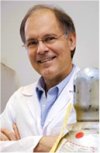Frontiers in Catalysis Science and Engineering
2019
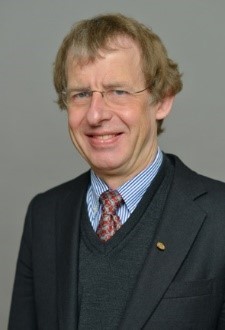
Christof Woell
Chemistry of Oxydic and Organic, Karlsruhe Institute of Tehnology (KIT)
"Chemical Reactions at Isolated Sites Inside Metal Organic Frameworks"
Friday, August 30, 2019
EMSL Auditorium, 10:00 am - 11:00 am
Isolated, coordinatively unsaturated metal sites (CUS) within metal-organic framework (MOF) materials feature interesting chemical properties and offer applications as single-site catalysts. In this talk, we will discuss selected examples providing fundamental insight into chemical reactions occurring inside MOFs. In addition to the common form, powders, we discuss the potential of MOF thin films (SURMOFs). The combined spectroscopic and modeling approach applied to selected systems demonstrated that the catalytic activity of MOFs can be precisely tuned. A particular interesting case is the so-called defect-engineering, where structural imperfections are created in a controlled fashion. The chemical properties of MOF materials can be further modified by integration and decoration of linkers or loading with guest species, such as metal or metal-oxide nanoparticles or nanoclusters. A particularly interesting aspect of layer-by-layer approaches for the fabrication of MOF thin films is the prospect to realize tandem catalysts.
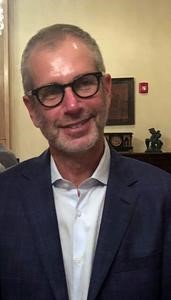
Andy Borovik
Department of Chemistry, University of California, Irvine
"Building Structural Complexity into Molecules: Utilizing Non-Covalent Interactions to Control Function"
Thursday, September 19, 2019
EMSL Auditorium, 10:00 am - 11:00 am
Location matters…no compound operates in isolation without interacting with its local environment. Metalloproteins are example systems whose active sites contain intricate structures that aid the performance of specific functions with high selectivities and efficiencies. The complexity of these systems complicates the study of their function and the understanding of the properties that give rise to their reactivity. One approach that has contributed to the current level of knowledge is the study of synthetic constructs that mimic one or more aspects of the native metalloproteins. These systems allow for analysis of individual components of structure and how they affect function. We are thus able to establish structure-function correlations that are necessary for evaluating mechanisms. Using key architectural features from active sites of metalloproteins as inspiration, my group has developed design approaches to prepare systems that regulate local environments around a metal center. These systems are used to study the activation of small molecules (e.g., O2 and H¬2O) that are essential in maintenance of human health. This presentation will highlight our molecular designs from small synthetic complexes to the use of larger, more diverse protein hosts.

Miquel Salmeron
Material Sciences Division, Lawrence Berkeley National Laboratory
"Solid Liquid Interfaces: A New Surface Science Frontier"
Thursday, September 17, 2019
EMSL 1077, 11:00 am - Noon
In this presentation I will review progress in liquid interfaces research in my laboratory, covering topics such as the melting of ice (liquid-gas interface) near the triple point using XPS and NEXAFS1. We later develop a variation of the NEXAFS technique that made possible the study of solid-liquid interfaces in electrochemical environments, allowing us to determine the chemical and structural nature of the electrical double layer. Today we continue our efforts to push the frontier of solid-liquid interface science by implementing interface sensitive FTIR vibrational spectroscopy. To that effect we use plasmonic tip enhancement of the IR field which allows us to achieve nm spatial resolution spectra and to map and explore in greater detail the nature of the electrode-electrolyte interface.

Eric McFarland
Department of Chemical Engineering, University of California, Santa Barbara
"Plan B: Taking the Carbon out of Fossil Fuels with Catalytic Reactive Separation"
Tuesday, April 23, 2019
EMSL Auditorium, 1:30 pm - 2:30pm
There is no evidence that significant reductions in the carbon dioxide emissions associated with power generation will be cost effectively achieved using current commercial alternatives to abundant and inexpensive fossil fuels. The lowest cost process for producing hydrogen and/or dispatchable electricity without CO2 emissions in the U.S. utilizes pyrolysis of abundant, low-cost, natural gas. The challenge is to achieve high methane reaction rates and high conversion to molecular hydrogen in a reaction environment where solid carbon can be continuously separated. Reactive separation using high temperature (~1000 oC) catalytic complex liquids has been investigated in several multi-phase reaction systems and high rates (>1 mole/m3-s) of methane decomposition and high selectivity for molecular hydrogen observed. When the physical properties of the liquids are selected optimally, conveniently separable solid carbon is produced from methane dehydrogenation in bubble column reactors. Solid catalysts in specific melts may also be continuously reactivated as the high temperature liquid serves as a solvent to remove carbonaceous surface deposits prior to the irreversible formation of deactivating coke. Single pass methane conversion of over 95% to molecular H2 at over 98% selectivity is demonstrated in complex melt systems. Fundamentals of C-H bond activation on melt surfaces and the interactions with the gas phase chemistry will be discussed and distinctions made as to how different reaction pathways can produce different types of solid carbons. Process designs for solid carbon synthesis with zero carbon hydrogen and/or electricity production together with relative technoeconomics will be presented.
2018
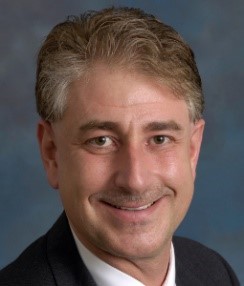
Jochen Lauterbach
Chemical Engineering, University of South Carolina, Columbia, SC
"High-throughput experimentation in combination with statistical methods and machine learning: From structure-property relationships to the discovery of new catalyst"
Thursday, August 21, 2018
EMSL 1077, 10:00 am - 11:00am
The development of high-throughput experimentation (HTE) over the past two decades allows researchers to screen large compositional and operational spaces more efficiently, while advances in statistical methods and machine learning (ML) have enabled researchers to systematically explore relationships between synthesis variables, structural properties and catalytic performance in these HTE datasets.
The first example will discuss a statistical design and analysis that was used to develop cobalt-based oxidation catalysts prepared via one pot metal salt reduction. Emphasis was placed upon understanding the effects of synthesis conditions on the resulting nanomaterial properties. HTE was employed to study the catalytic performance of Co oxidation catalysts over a wide range of synthesis and reaction conditions using a 16-channel fixed bed reactor equipped with a parallel infrared imaging system. Specifically, Co3O4 nanomaterials of varying properties were evaluated for their performance as oxidation catalysts. Figure-of-merits, including light-off temperature, apparent activation energy and catalyst stability, were measured and mapped back to the catalyst properties and synthesis conditions. Statistical analysis methods were used to elucidate property-activity relationships, as well as the design rules relevant for the synthesis of active catalysts.
In the second example, the discovery of novel NH3 decomposition catalysts will be presented. The first step was to use HTE to screen a limited amount of catalyst compositions and use that training dataset as input to a random forest ML model. The ML model was able to predict new materials, which were subsequently tested and led to the discovery of two new, highly active catalyst compositions. Advantages and disadvantages of ML as applied to catalyst discovery will be discussed.
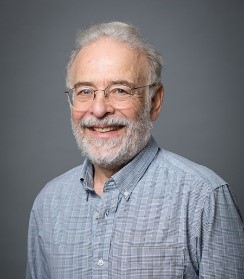
Héctor D. Abruña
Department of Chemistry & Chemical Biology, Energy Materials Center, Cornell University
"Operando Methods for the Study of Energy Materials"
Thursday, August 02, 2018
EMSL 1077, 11:00 am - Noon
In his Frontiers lecture, Professor Héctor D. Abruña, Energy Materials Center, Cornell University, will discuss the development of operando methods for the study and characterization of fuel cell and battery materials. The presentation will begin with a brief overview of the methods employed with particular emphasis on the use of X-ray diffraction (XRD), X-ray absorption spectroscopy (XAS), X-ray microscopy and tomography, and transmission electron microscopy (TEM) under active potential control. The utility of these methods will be illustrated by selected examples including electrocatalysts for the oxygen reduction reaction (ORR) employing ordered intermetallic phases including the phase transformation from alloy phase to ordered intermetallic phase. Spectroscopic studies of Li/S batteries and Li metal deposition and dendritic growth will also be discussed. The use of operando TEM will be illustrated by studies of fuel cell catalyst degradation and coalescence and lithiation/de-lithiation dynamics of LiFePO4 via energy-filtered TEM. The presentation will conclude with an assessment of future directions.
2017
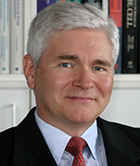
Wolfgang Lubitz
Max Planck Institute of Chemical Energy Conversion
"Elucidating Structure and Function of [NiFe] and [FeFe] Hydrogenases by Spectroscopic and Electrochemical Techniques"
Thursday, July 27, 2017
CSF Mural, 10:30 am
Hydrogenases catalyze the reversible heterolytic splitting of H2 at binuclear (NiFe or FeFe) metal centers. Understanding how these enzymes achieve their high efficiencies is key to developing molecular catalysts for H2 conversion and production. To shed light on the catalytic cycles of these enzymes, intermediate are trapped and characterized by electrochemical and spectroscopic methods, using vibrational and magnetic resonance techniques.
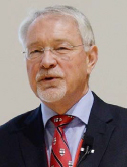
H.J. Freund
Department of Chemical Physics, Fritz-Haber-Institut der Max-Planck-Gesellschaft
"Model Systems in Heterogeneous Catalysis at the Atomic Level"
Friday, April 7, 2017
EMSL Auditorium, 10:00 am
Thin single crystalline oxide films comprise perfect supports to grow nanoparticles of metals and other catalytically relevant materials. The model systems thus created can be thoroughly investigated with respect to structure and/or chemical activity applying techniques of surface science under ultrahigh vacuum conditions as well as the traditional techniques applied in catalysis to study chemical kinetics under ambient conditions. It is possible to image active sites at the metal nanoparticles, oxide interface and relate this directly to variations in the electronic structure.
While oxide films are prepared as single crystalline films to clearly report on structure-reactivity relationships, we have demonstrated for the case of a silica film that both its crystalline as well as vitreous structure could be atomically resolved opening avenues to investigate heterogenized homogeneous catalysts, which are often based on amorphous silica supports.
Wanda Andreoni
Swiss Federal Institute of Technology Lausanne, EPFL Institute of Physics
"CO2 Capture in Amine Solutions: Modeling and Simulations of Key Chemical Reactions"
Friday, March 31, 2017
EMSL Auditorium, 9:30 am
Amine solutions are still at the heart of the most mature technology for post-combustion CO2 capture. Monoethanolamine (MEA) is the prototype. However, serious concerns exist about the related costs, e.g., for the release process in MEA solutions, and several problems must be solved before their application can be extended to a larger scale. The need for both solvent and process optimization has promoted fundamental research, mainly using experimental methods. During the past decade, several models and simulations have been performed, with the aim of deepening our understanding of the key elemental reactions of CO2 involved in its capture in solution. Our own study of the CO2 uptake and release was based on DFT-based molecular dynamics aided by metadynamics. We applied it to selected aqueous amines: monoethanolamine, 2-amino-2-methyl-1,3-propanediol (AMPD), 2- amino-2-methyl-1-propanol (AMP) and benzylamine (BZA). The scenario emerging from our simulations has provided new insights into the reaction mechanisms and also into the origin of the different behavior of different amines. In particular, the role of water — previously strongly underestimated in computational studies — was established as essential in facilitating the development of all the relevant reactions.
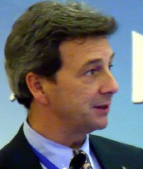
Miguel A. Bañares
SpeICat - Spectroscopy and Industrial Catalysis CSIC – Institute for Catalysis, Madrid, Spain
"Operando Methodology, a Tool to Understand Catalysts at Work and Functional Materials: Applications for Catalysis and Hydrogen Storage"
March 30, 2017
EMSL Auditorium, 1:30 pm
Vibrational spectroscopy, Raman and infrared, provides valuable insight on the states and transformation of working catalytic and functional materials. The study of surface structure and interface phenomena is at the core of the catalytic act. Understanding the structure-property relationships at the molecular level provides a rational basis for the development of catalysts with improved performance and stability. The transversal operando approach places it at the junction between fundamental catalytic chemistry and applied chemical engineering.
The speaker will present research on operando methodology to understand structure-property relationships on supported oxide catalysts, both in powder and in conformed (monolith) state for environmental and oxidative dehydrogenation catalysis. He will also present progress in understanding ammonia borane based materials for hydrogen release, and the role of functionalization and nanoconfinement.

Philippe Sautet
University of California, Los Angeles
"Structure-Activity Relations in Heterogeneous Catalysis: A View from Computational Chemistry"![]()
Wednesday, February 22, 2017
EMSL Auditorium, 9:00 am
The understanding of the catalytic properties of nanoparticle catalysts and the design of optimal composition and structures demands fast methods for the calculation of adsorption energies. By exploring the adsorption of O and OR (R=OH, OOH, OCH3) adsorbates on a large range of surface sites with nine transition metals, we propose new structure sensitive scaling relations between the adsorption energy of two adsorbates that are valid for all metals and for all surface sites. This opens the way for a new class of activity volcano plots where the descriptor is not an energy but a structure-related descriptor. In addition, to better grasp finite size effects in the nanoparticles, a generalized coordination number is proposed as a leading descriptor for the adsorption strength. Simple descriptors as generalized coordination show a strong predictive potential exemplified in the design of optimal oxygen reduction reaction catalysts, with strong impact on efficient storage of energy. In a second part, smaller clusters (Pt13) will be considered, supported on a g-alumina surface. We will show how the structure of the cluster is modified upon interaction with the support. The system will then be submitted to a pressure of H2. The cluster is covered by a high coverage of H atoms (up to 3H per surface Pt) and its structure is modified, with strong implications on its reactivity.
Finally, I will show how the ordering of the surface of an alloy between Ag and Pd is modified between vacuum and a gas phase of acetylene. The molecule hence creates the active site on the alloy surface for its own reactivity.
2016
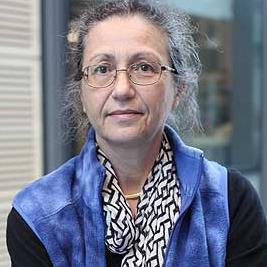
Annabella Selloni
Princeton University
"Structure and Reactivity of Anatase TiO2 Surfaces from First Principles Simulations"
Tuesday, November 1, 2016
EMSL Auditorium, 1:30 pm
Anatase is the form of TiO2 that is most widely used in photocatalysis and solar energy conversion. Anatase is also more active than rutile for most photocatalytic reactions, which has been attributed to various reasons such as the longer charge-carrier lifetime, the higher charge-carrier mobility, and the higher production of reactive OH radicals. In this talk, Professor Selloni presents recent applications of first principles electronic structure calculations and molecular dynamics simulations to understand the structure and chemistry of anatase surfaces, with particular focus on the interactions with water and molecular oxygen, the influence of charge carriers on the reactivity, and the differences between anatase and rutile.
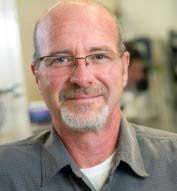
John W. Peters
Montana State University
"Electron Bifurcation: The Recently Recognized Third Mechanism of Biological Energy Conservation"
Monday, September 26, 2016
EMSL Boardroom, 9:00 am
Electron bifurcation is the recently recognized third mechanism of biological energy conservation. It simultaneously couples exergonic and endergonic oxidation-reduction reactions to circumvent thermodynamic barriers and minimize free energy loss. Little is known about the details of how electron bifurcating enzymes function, but specifics are beginning to emerge for several bifurcating enzymes. To date, those characterized contain a collection of redox cofactors including flavins and iron-sulfur clusters. The current understanding of bifurcating enzymes and the hypothetical mechanistic features required to reversibly partition multiple electrons from a single redox site into exergonic and endergonic electron transfer paths will be discussed. New insights into the mechanism of electron bifurcation from a combination of structural and spectroscopic work will be presented.
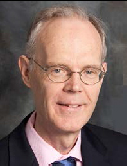
Robert H. Morris
University of Toronto
"Catalysis Enabled by Metal-Ligand Cooperation"
Monday, May 2, 2016
EMSL Auditorium, 1:30 pm
This lecture will describe our development of iron-based homogeneous catalysts for the asymmetric transfer hydrogenation (ATH) and asymmetric pressure hydrogenation (AH) of ketones and imines. These chemical processes allow the preparation of enantiopure alcohols and amines for use in the pharmaceutical, agrochemical and fragrance industries while avoiding the use of conventional platinum-metal based catalysts. In the catalyst design, we apply the principle of cooperation between the metal and the nitrogen donor of phosphorous-nitrogen or N-heterocyclic carbine-nitrogen ligands to the activation of alcohols, dihydrogen or aqueous formate to generate H-M-N-H units with exceptional bifunctional reactivity toward the polar bonds of carbonyl and imine compounds. A modular, iron-templated synthesis provides access to a wide range of enantiopure tetradentate and tridentate phosphorus and nitrogen metal precatalysts, providing the correct structure for highly enantioselective hydrogenations for several classes of substrates. DFT modelling of the catalytic cycle is useful in understanding the source of the high activity of these catalysts and the sense of enantioinduction. A simple method of estimating the acidity of hydride and dihydrogen complexes helps to understand and possibly design these and many other catalytic processes.
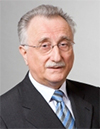
Notker Rösch
Technische Universität München and A*STAR Institute of High Performance Computing
"Biomass Transformations Over Transition Metals – Unraveling Complex Reaction Networks by Computational Catalysis"
Wednesday, March 9, 2016
EMSL Auditorium, 12:30 pm
At this talk, Rösch discusses catalytic reaction networks related to aqueous phase processing of biomass derived poly-ols, modeled computationally by mono-ols. In particular, he addresses reforming and hydrodeoxygenation reactions of propanol on platinum and compares these results to the situation on the more oxophilic transition metal ruthenium. In addition, he discusses the reaction network of lignin-derived aromatic oxygenates over transition metals on the example of the hydrodeoxygenation of guaiacol over ruthenium.
2015

Graham J. Hutchings
Cardiff University
"Catalysis Using Supported Gold Nanoalloy Catalysts"
Thursday, May 14, 2015
EMSL Auditorium, 2:30 pm
The identification that gold in nanoparticulate form is an exceptionally effective redox catalyst has paved the way for a new class of active catalysts. Alloying gold with other metals can enhance the activity, and these catalysts are effective for the oxidation of alcohols and hydrocarbons as well as the direct synthesis of hydrogen peroxide. In this talk, the use of gold as a key component of catalysts for the direct synthesis of hydrogen peroxide, which is a hydrogenation reaction, and the oxidation of alcohols will be discussed. The synthesis of active catalysts will be described as well as their characterization. Aspects of the latest research on these topics will be presented.
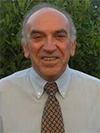
Francois Fajula
University of Montpellier & CNRS
"Non-conventional Eco-friendly Routes for the Preparation of Ordered Porous Materials for Catalysis and Bio Catalysis"
Friday, April 17, 2015
EMSL Auditorium, 1:30 pm
This lecture will introduce three synthesis strategies developed in recent years in our group for the preparation of ordered porous materials:
- Phospholipid-templated mesoporous supports for enzyme encapsulation
- Stimuli-response micelles of hydrosoluble copolymers for the eco-synthesis of functional mesoporous materials
- Conversion of polysaccharides into functional materials.

Gary L. Haller
Yale University
"Reaction Pathways Involving Methoxy in Methanol to Gasoline/Olefins"
Tuesday, March 10, 2015
EMSL Auditorium, 1:30 pm
New sources of fossil fuels have stimulated a search for routes to transportation fuels based on synthesis gas, that is, through the synthesis gas production of methanol. This has drawn renewed attention to the methanol-to-gasoline (-olefins), MTG (MTO) processes, most of which are based on H-ZSM-5 zeolites. The accepted mechanism is complex and involves interactions between the inorganic zeolite and organic molecules in the pores, the so-called "hydrocarbon pool" mechanism. Within the pool mechanism, there are two steady-state catalytic cycles involving methylation of olefins and methylation of aromatics. Examining methylation reactions in the presence of the steady-state hydrocarbon pool is difficult, but because of the stability of the methoxy species, it can be formed and studied in the absence of the hydrocarbon pool. Reaction pathways involving methylation of CO and dimethyl ether by adsorbed methoxy to form possible initial C–C bond species and reactions steps of olefins and aromatics methylation will be reviewed.
2014

Falko P. Netzer
Karl-Franzens University, Graz, Austria
"Oxide Materials at the Two-Dimensional Limit"
Tuesday, October 7, 2014
EMSL Auditorium – 10:00 AM
Thin films of oxides have widespread applications in science and technology. With the increasing trend towards miniaturisation and with the emerging nanotechnologies, the oxide phases of interest become thinner and thinner, reaching thickness levels below one nanometer and eventually the two-dimensional (2-D) limit of single-atom or single-polyhedron thick layers. The reduction in dimensionality from 3-D bulk to 2-D surface materials is accompanied by a drastic change in physical and chemical properties. In this lecture, I will investigate this transition from 3-D to 2-D and examine what happens when oxide layers become thinner and thinner.

Prof. Z Conrad Zhang
Dalian Institute of Chemical Physics, Dalian, China
"Differentiation of metal chloride catalysts in glucose conversion in [BMIM]Cl ionic liquid and improved process feasibility for the production of 5-HMF and derivatives"
Friday, October 3, 2014
EMSL Boardroom - 1:00PM
One of the most notable advances toward biorefinery in recent years is the discovery of new catalytic systems enabling the conversion of glucose to a number of potential platform chemicals. Catalytic isomerization of aldoses to ketones is an important fundamental step for the transformation of cellulosic biomass to biobased chemicals and liquid fuels. Chromium [II,III] chlorides were discovered to be the most effective catalysts for the isomerization of glucose to fructose, which is readily dehydrated in [AMIM]Cl ionic liquids to form 5-hydromethylfurfural (5-HMF) in high yield. The 5-HMF is a versatile platform chemical for sustainable production of alternative chemicals based on biomass feedstock.
This talk covers the recent progress in three areas of research in my laboratory at the Dalian Institute of Chemical Physics: (1) new mechanistic insights on the correlation between the distinctive coordination chemistry features of four classes of metal chlorides and their drastically different catalytic performances in the conversion of glucose in [BMIM]Cl; (2) new understanding of the strong bonding between 5-HMF and the ionic liquid that resulted in largely improved efficiency of separating 5-HMF from the ionic liquid; and (3) very high value new chemicals derived from 5-HMF via catalytic systems.
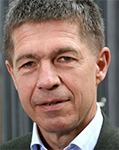
Joachim Sauer
Institut für Chemie, Humboldt-Universitat, Berlin, Germany
"Chemical Accuracy for Molecule-Surface Interactions: Ab Initio Energies and Entropies"
Friday, August 15, 2014
EMSL Auditorium - 1:30PM
A hybrid method that combines MP2 on cluster models with DFT+dispersion on periodic models is presented that yields binding energies of molecules on metal oxide surfaces ab initio and with chemical accuracy. Examples are the binding of CO and CH4 on Mg(001), of H2, CH4, CO and CO2 on the internal surfaces of metal organic frameworks, as well as the adsorption of hydrocarbons in zeolites. Entropies of adsorption can also be calculated with chemical accuracy from vibrational partition functions calculated by DFT+dispersion, when anharmonicities are included. This is shown for adsorption of CH4 on MgO(001) and in a zeolite with Bronsted sites (H-chabazite).

Fabio Bellot Noronha
National Institute of Technology, Rio de Janeiro, Brazil
"Catalysts Development for the Production of Liquid Fuels by Bio-Oil Upgrading: Hydrodeoxygenation of Model Molecules"
Friday, August 8, 2014
EMSL 1077 – 10:00 AM
The hydrodeoxygenation process may play an important role in the upgrading of biomass pyrolysis oil (bio-oil) to transportation fuels. In this process, oxygen is removed as water by the addition of hydrogen. To minimize the high operating costs typically associated with bio-oil upgrading, the development of catalysts with high activity, stability, and selectivity to the hydrocarbon products is an important task. It is particularly desirable finding catalysts and processes able to operate at low pressures and with minimum hydrogen consumption.
To design new catalysts with enhanced activity, selectivity, and stability, it is very important to understand the contributions of each type of sites on the surface to the reaction mechanism. Therefore, the conversion of m-cresol and phenol in the presence of H2 has been investigated on different catalysts at 300°C and atmospheric pressure. A novel reaction pathway that includes some important conceptual differences from those previously proposed in the literature is proposed.
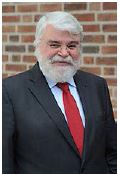
Gerhard Erker
Universität Münster, Organisch-Chemisches Institut, Germany
"Frustrated Lewis Pair Chemistry: Principles and Some Recent Results"
Thursday, August 7, 2014
EMSL Auditorium – 10:00AM
Some general features of frustrated Lewis pair chemistry will be discussed. Most characteristic of FLP behavior is metal -free heterolytic dihydrogen splitting and utilization of this property for the development of metal-free catalytic hydrogenation processes. Consequently, several examples will be presented and discussed. This will be followed by the description and discussion of several newly found reaction types. These involve reactions of borane carbonyls at intramolecular frustrated Lewis pair templates and the reactions of the resulting formylborane type products. Frustrated Lewis pairs have opened a novel entry to methylene phosphonium systems, the phosphorus analogues of the ubiquitous iminium ions. This has led us to a development of a phosphorus relative of the Stork reaction. Eventually, a similarity between coordination of small organic donor molecules to typical transition metal complexes and to the bifunctional intramolecular main group element phosphane/borane frustrated Lewis pairs is discussed. This has led to the development of persistent FLP-NO radical chemistry, systems that have become very easily available by the reaction of various intramolecular vicinal P/B FLPs with nitric oxide (NO). Some features of the chemistry of these new persistent nitroxide radicals will be presented.

Carl A. Koval
Joint Center for Artificial Photosynthesis
"Development of Scalably Manufacturable Solar-Fuels Generatorss"
Friday, May 9, 2014
EMSL Auditorium – 9:30AM
JCAP's mission is to build fully integrated solar-fuels generators that utilize earth-abundant semiconductors and catalysts for efficient conversion of water to O2 and H2 and for the reduction of CO2 to liquid fuels. JCAP prototypes are designed to enable separation of products and therefore require membranes and complex interfaces between various material components that will function under realistic operating conditions. JCAP's long-term goal is to develop a commercially viable, solar-generation technology that simultaneously satisfies the following four criteria: high efficiency, multi-year stability, low module cost, and safe operation. JCAP's approach to assembling complete artificial photosynthetic systems is to develop robust concepts for complete solar-fuels generators, then to break them down into essential assemblies of components, and finally to adapt or discover the materials needed to fabricate those assemblies. JCAP research bridges basic and applied sciences as well as engineering associated with prototype construction and consideration of scale-up challenges.
2013
Aditya Bhan
Associate Professor, Department of Chemical Engineering and Materials Science,
University of Minnesota
"Catalytic Deoxygenation"
Wednesday, December 3, 2013
EMSL Auditorium - 9:00AM
The (CH2O)n stoichiometry of biomass implies that its conversion to energy carriers and other petroleum-derived hydrocarbons centers on the removal of oxygen. This talk will discuss cases studies of deoxygenation chemistry on metal carbide catalysts. Specifically, the talk will include a discussion of (i) the potential for using CH4 – instead of molecular hydrogen – so that in essence, CH4 serves as a surrogate for molecular hydrogen for biomass deoxygenation while biomass serves as the oxygen carrier for hydrogen removal from CH4; and (ii) the site requirements and mechanism for selectively cleaving C=O and C-O linkages in sugar and lignin monomers for the synthesis of bulk and specialty chemicals.
Clifford Kubiak
Distinguished Professor of Chemistry and Biochemistry
Harold C. Urey Chair in Chemistry
University of California, San Diego
"The Electrocatalytic Reduction of Carbon Dioxide and Oxidation of Formate and Formaldehyde"
Tuesday, February 14, 2013
EMSL Auditorium - 10:00AM
Catalysis of the conversion of carbon dioxide to liquid fuels using solar and electrical energy is a global challenge that could impact the carbon balance by recycling CO2 as fuels. A related challenge is the direct conversion of chemical energy contained in liquid fuels to electrical energy in fuel cell applications. Recent results in the study of artificial catalysts for the chemical reduction of CO2 will be reviewed.
2012

Jack D. Griffith, Ph.D.
Jack D. Griffith, Ph.D.
Kenan Distinguished Professor of Microbiology and Immunology and Biochemistry
University of North Carolina School of Medicine
"Electron microscopic visualization of
telomeres, DNA repair factors, and nanoparticles bound to cells"
Tuesday, October 23, 2012
EMSL Auditorium - 9:00AM
High-resolution electron microscopy provides a unique window into the architecture of DNA and DNA-protein complexes. In our studies of the ends of chromosomes (telomeres), we have shown that human chromosomes end in giant duplex loops. The telomeric factors and DNA repair factors involved will be described and EM and biochemical studies used to illustrate how these factors are central to both cancer and aging. A new approach using cryo methods combined with freeze drying and high-resolution metal coating is providing an exciting means to visualize cell structures including actin networks and nanoparticles being taken up by cells. The method and applications will be discussed.
Jack R. Norton
Department of Chemistry
Columbia University
"H• Transfer from Transition-Metal Hydrides. Applications to Radical Polymerizations and Cyclizations"
Tuesday, February 14, 2012
EMSL Auditorium - 10:00AM
Steric as well as electronic factors affect the rate at which H• is transferred between a transition metal and the carbon of a double bond. However, the weak M-H bonds of the first-row metals, particularly vanadium, make them uniquely effective in this regard.
Such reactions can be used in the catalysis of chain transfer during radical polymerizations. In this process a metalloradical abstracts H• from a chain-carrying radical, transfers it to the double bond of a monomer, and starts a new chain. The resting state of traditional cobalt chain-transfer catalysts is the Co(II) metalloradical, but both the metalloradical and the hydride are present during the operation of newer (Cr) catalysts. Success at catalyzing chain transfer requires (1) that the M-H bond not be too much stronger than the 50 kcal/mol C-H bond in chain-carrying radicals, and (2) that M• be stable enough to discourage the formation of bonds other than that to hydrogen.
CpCr(CO)3H and HV(CO)4(P-P) can be used to initiate radical cyclizations by transferring H• to activated terminal olefins. However, the resulting radicals must cyclize quickly; competing reactions include transfer of a second H• (resulting in hydrogenation) and removal of an H• (resulting in isomerization). Cp(CO)3CrH is relatively slow at H• transfer, but can be regenerated with H2 gas, enabling it to carry out reductive cyclizations catalytically; vanadium hydrides HV(CO)4(P-P) are faster but operate stoichiometrically.
Douglas W. Stephan
Department of Chemistry
University of Toronto
"Frustrated Lewis Pairs": Metal-Free Hydrogenations and Small Molecule Activation
Thursday January 26, 2012
EMSL 1077 - 1:00PM
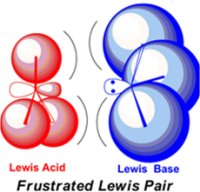
The activation of hydrogen has been the purvue of transition metals for 100 years. In recent work we have discovered the first metal-free system capable of H2 activation. Sterically encumbered Lewis acid and base combinations do not form "classical" Lewis acid-base adducts. Rather, the unquenched Lewis acidity and basicity of such sterically "frustrated Lewis pairs (FLPs)" is available for reactivity. Such systems have been shown to effect the heterolytic cleavage of hydrogen and applied to develop metal-free hydrogenations for C=N bonds in a variety of organic substrates. In addition, we have shown that FLP hydrogenation can be used to effect aromatic reductions. FLPs are also shown to exhibit unprecedented reactivity with a variety of other small molecules, including olefins, dienes, alkynes, cyclopropanes, CO2 and N2O. The implications of the discovery of such systems to catalysis and further details will be presented in this lecture.
2011
Daniel E. Resasco
Douglas and Hilda Bourne Chair
George Lynn Cross Professor
School of Chemical, Biological and Materials Engineering
University of Oklahoma
"MODEL COMPOUND STUDIES TOWARDS THE CATALYTIC UPGRADE OF PYROLYSIS OIL IN VAPOR AND LIQUID PHASES"
Tuesday, August 16, 2011
EMSL Auditorium - 9:00AM
An effective approach to stabilize pyrolysis oil is conducting the refining before condensation of the vapors occurs. Degradation by further reaction (oligomerization) occurs in the liquid phase and accelerates when the liquid is subsequently heated for fractionation or other processing. The proposed "catalytic cascade" incorporates a series of reactions that include: (a) formation of C-C bonds to extend the carbon backbone of short oxygenates to the desired gasoline/diesel range; (b) incorporation of short carbon fragments (C1-C3) into the aromatic ring of phenolic compounds; (c) deoxygenation of the resulting products to monofunctional compounds or hydrocarbons. The different catalysts used in this cascade include: basic catalysts (MgO, ZrO2, CsX zeolites), acidic catalysts (H-ZSM5, H-beta zeolites), mixed oxides (CeZrO2), supported metal catalysts (Cu, Ni, Ru, Pd supported on carbon nanotubes and monolith). These catalysts are used in the vapor phase or in liquid (biphasic) systems. The latter employs nanoparticle catalysts to stabilize water/oil emulsions and to conduct reactions at the liquid/liquid interface to benefit from the differences in solubility exhibited by the reactants (bio-oil) and products (bio-fuels) and achieve continuous reaction/separation.
Prof. Jingyue (Jimmy) Liu
Director, Center for Nanoscience
Professor, Department of Physics & Astronomy
Professor, Department of Chemistry & Biochemistry
"Nanostructures for Catalysis and Energy Production"
Friday, May 13, 2011
EMSL Auditorium - 1:30PM
» Research Highlight: Large Problem, Tiny Answer
Energy is not only the driver for improving the quality of human life but also critical to our survival. To power the planet for a better future, it is imperative to develop new processes for effective use of energy and to develop sustainable and clean energy resources. Catalysis, the essential technology for accelerating desired chemical transformations, plays an important role to realizing environmentally friendly and economically feasible processes for producing energy carriers and for converting them into directly usable energy. Design and synthesis of controlled nanostructures can help us address some key issues encountered in understanding the fundamental processes and dynamics of catalyzed reactions. We have recently synthesized both nanostructured metal oxides and shape-controlled metal nanocrystals, and applied them to the systematic investigation of catalytic processes for steam reforming of alcohols and the oxidation of carbon monoxide on nanoscale facets. Aberration-corrected scanning transmission electron microscopy techniques have been used to elucidate the atomic structures of the active phases. The ability of sub-Ångström resolution imaging with in situ capabilities available in a modern aberration-corrected TEM/STEM provides us excellent opportunities to study the dynamic behavior of nanostructures and to understand their synthesis-structure-performance relationships. Recent progresses in synthesizing novel metal oxide nanostructures for energy harvest and storage will also be discussed.
Prof. Manos Mavrikakis
University of Wisconsin - Madison
Department of Chemical & Biological Engineering
"On the role of hydrogen in heterogeneously catalyzed reactions"
Monday, March 14, 2011
EMSL Auditorium - 1:00PM
Hydrogen is a frequent participant in several heterogeneously catalyzed reactions, including Fischer-Tropsch Synthesis (FTS) of fuels, ammonia synthesis, oxygen reduction reaction (ORR), NO reduction, preferential oxidation of CO in the presence of H2 (PROX), etc. Having analyzed the detailed aspects of the reaction mechanism for a number of these reactions on various transition metal and alloy surfaces using first-principles methods, some common principles governing the role of hydrogen in a wide range of catalytic transformations begin to emerge. In this presentation, we will discuss these common mechanistic principles by examples, including FTS, NO-reduction, ORR, PROX, through an analysis of the energetics of alternative elementary reaction steps and the resulting potential energy diagrams. Connections to observations from experimental studies provide an invaluable perspective for the evaluation of our theoretical assessments.
Prof. Thomas B. Rauchfuss
University of Illinois
Department of Chemistry
William H. & Janet B. Lycan Professor of Chemistry
"Synthetic Analogues for the Active Sites of the Hydrogenase Enzymes"
Monday, February 28, 2011
EMSL Auditorium - 10:00AM
The lecture will summarize recent progress in modeling the behavior of the hydrogenase enzymes. Emphasis will be on reactivity of reduced diiron and nickel-iron thiolates toward protons, oxidizing equivalents, and other electrophiles. Work on the FeFe models, which is more advanced, will show the importance of both the redox and internal base modules of this active site. Work on NiFe systems will highlight progress—the preparation of Ni-Fe-hydrides—and gaps.
Prof. Michael T. Klein
University of Delaware, Energy Institute
Department of Chemical Engineering
"Molecule-based Modeling of Heavy Hydrocarbon Structure and Reaction"
Wednesday, February 23, 2011
EMSL Auditorium - 10:00AM
The considerable interest in molecule-based models of heavy hydrocarbon structure and reaction is motivated by the need to predict both upstream and downstream properties of these materials. This is because the molecular composition is an optimal starting point for the prediction of mixture properties. The potential advantages of molecule-based modeling are thus clear. Less readily apparent, however, is that the development and operation of molecular models comes with a large requirement for model construction and solution time as well as analytical and reactivity information.
Prof. Christopher W. Jones
Georgia Institute of Technology
School of Chemical & Biomolecular Engineering
School of Chemistry and Biochemistry
J. Carl & Sheila Pirkle Faculty Fellow
"Heterogenized M-Salen Catalysts for Enantioselective Reactions: Catalyst Design, Structure-Reactivity Trends, and Deactivation Pathways"
Monday, January 31, 2011
EMSL Auditorium - 1:00PM
» Research Highlight: A Personality Change for a Catalyst
Metal salen complexes are widely applied as catalysts for numerous important enantioselective reactions. The reactions catalyzed by metal salen complexes generally follow either (i) monometallic mechanisms (e.g. Mn-salen for epoxidation or Ru-salen for cyclopropanation), whereby a single metal complex promotes the catalytic reaction or (ii) bimetallic mechanisms, where cooperation between two metal complexes is required for efficient catalysis (e.g. Co-salen for epoxide ring-opening or Al-salen conjugate additions of cyanide). The design of effective heterogenized catalysts should therefore take into account the reaction mechanism, as reactions in category (i) are hypothesized to be optimized by accessible yet isolated supported metal salen complexes, whereas reactions of type (ii) are hypothesized to require efficient complex mobility, facilitating metal salen—metal salen cooperative interactions.
Here, several new designs for (a) soluble polymer or oligomer supported metal salen complex catalysts, (b) insoluble polymer resin supported complexes, and (c) insoluble porous silica supported are described. Their utility in the cooperative Co-salen catalyzed hydrolytic kinetic resolution of epoxides and the monometallic Ru-salen catalyzed enantioselective cyclopropnantion of olefins is reported. The kinetics of the reactions using both fresh and recycled catalysts are compared. Most catalysts are shown to deactivate during use, and the mechanisms of deactivation are explored. Strategies to reduce or mitigate catalyst deactivation are described.
2010
| Date | Speaker | Title |
|---|---|---|
| November 17, 2010 | Prof. Raul F. Lobo | Small Pore Zeolites: Effective Catalysts for the Selective Catalytic Reduction of NOx
Flier | Article |
| September 29, 2010 | Prof. T. Brent Gunnoe | Development of Transition Metal Catalysts for the Hydroarylation of Olefins
Flier | Article |
| September 13, 2010 | Prof. Dionisios G. Vlachos | Complexity and Emergent Behavior in Catalytic Reactions: CO Oxidation on Gold, Biomass Processing, and Ammonia Decomposition
Flier | Article |
| July 13, 2010 | Prof. George Huber | Breaking the Chemical and Engineering Barriers to Lignocellulosic Biofuels
Flier | Article |
| March 17, 2010 | Prof. Abhaya Datye | Bimetallic PdZn Catalysts for the Steam Reforming of Methanol
Flier | Article |
| March 1, 2010 | Joost VandeVondele | Cutting Through Questions for a Molecular-Level Understanding of Solar Cells
Flier | Article |
| February 24, 2010 | Jingguang G. Chen | Experimental and Theoretical Studies of Cathode Electrocatalysts for Fuel Cells
Flier | Article |
2009
| Date | Speaker | Title |
|---|---|---|
| September 8, 2009 | Dr. Stefan Vajda | Bond-Selective chemistry on Catalysts Designed at the Subnanometer to the Nanometer Scale
Flier | Article |
| June 23, 2009 | Prof. Dr. Jean-Pierre Gilson | New Insights on Zeolite chemistry by Advanced IR and NMR characterization Tools
Flier | Article |
| March 31, 2009 | Dr. Marc J.A. Johnson | Tuning the Strength and Reactivity of Metal-Ligand Bonds: Reactive Nitrides and Stable Carbides in Catalytic Multiple-Bond Metathesis Reactions
Flier | Article |
2008
| Date | Speaker | Title |
|---|---|---|
| August 26, 2008 | Prof. Dr. Johannes Lercher | Catalytic Activation of Hydrocarbons in Confined Spaces
Flier | Article |
| March 18, 2008 | Prof. Dr. Cynthia M. Friend | Chemical Reactivity and Surface Restructuring at the Nanoscale: Oxidation Reactions Promoted by Au
Flier | Article |
| January 30, 2008 | Prof. Dr. Peter C. Stair | The Chemical Nature of Supported Vanadium Oxide
Flier| Article |
2007-2003
| Date | Speaker | Title |
|---|---|---|
| October 22, 2007 | Prof. Dr. Bert Weckhuysen Utrecht University, The Netherlands | A Close-Up View of Catalytic Solids in Action
Flier | Article |
| October 1, 2007 | Prof. Dr. Helmut Schwarz | Institute of Chemistry, Technical University, Berlin, Germany Flier| Article |
| September 21, 2007 | Prof. S. Ted Oyama Virginia Polytechnic Institute & State University |
Nanostructure of a High-Permeability, Hydrogen-Selective Inorganic Membrane |
| September 12, 2007 | Tom Baker Los Alamos National Laboratory |
Molecular Catalysis for Energy Applications |
| September 10, 2007 | Prof. Alexis T. Bell University of California, Berkeley |
Identifying the Relationships between Catalyst Composition and Structure and Catalyst Performance: Challenges for the Experimentalist and the Theoretician |
| April 12, 2007 | Prof. Gabor Somorjai University of California, Berkeley |
Transition of Metal Single Crystals to Monodispersed Nanoparticles (1-10 nm) as Model Catalyst Systems. Bridging the Pressure Gap and Materials Gap in Catalysis |
| March 9, 2007 | Dr. Robert J. Davis University of Virginia |
Selective Oxidation Reactions Catalyzed by Supported Gold Nanoparticles |
| January 31, 2007 | Prof. Robert L. Augustine Seton Hall University |
Anchored Homogeneous Catalysts: The Best of Both Worlds |
| September 7, 2006 | Prof. Wolfgang Sachtler Northwestern University |
Mechanism of NOx Reduction with Acetaldehyde over Zeolite-Based Catalysts |
| May 25, 2006 | Pratibha L. Gai Dupont Research Fellow |
Pioneering development of atomic resolution-operando TEM for catalysis: surface nano-engineering in the 21st Century |
| May 12, 2006 | Dr. Matthias Scheffler Fritz Haber Institute of the Max Planck Society |
Novel Insights into Heterogeneous Catalysis by First-Principles Statistical Mechanics |
| April 19, 2006 | Daniel G. Nocera Massachusetts Institute of Technology |
Powering the Planet: The Challenge to Chemistry in the 21st Century |
| March 30, 2006 | Dr. Tobin J. Marks Vladimir N. Ipatieff Northwestern University |
Bridges Between Heterogeneous and Homogeneous Catalysis. The Case of Single-Site and Multiple-Site Olefin Polymerization Catalysts |
| February 2, 2006 | Dr. Horia Metiu University of California, Santa Barbara |
Doped oxides as catalysts. Why gold clusters are reactive? CO oxidation by Au2/TiO2(110) |
| December 7, 2005 | Dr. Barry J. Cooper Johnson Matthey |
The Catalytic Control of Motor Vehicle Emissions |
| September 27, 2005 | Dr. Gary McVicker ExxonMobil Research and Engineering Company Retired March 2005 |
Evolution of Enhanced Performance Pt/KL Reforming Catalysts |
| September 12, 2005 | James A. Dumesic Department of Chemical Engineering University of Wisconsin - Madison |
Catalytic Production of Hydrogen and Alkanes by Aqueous-phase Biorefining of Oxygenated Hydrocarbons |
| September 7, 2005 | Frits Dautzenberg Consultant |
Environmentally Benign Catalysis and Reactor Approaches towards Curing the World's Oil Addiction |
| July 18, 2005 | Bala Subramaniam NSF Engineering Research Center for Environmentally Beneficial Catalysis (CEBC) |
"Catalysis in Carbon Dioxide-Based Media: A Multiscale Approach toward Process Development" |
| June 28, 2005 | Dr. Robert J. Farrauto Corporate Research Fellow Engelhard Corporation |
On the Road to the Hydrogen Economy |
| June 6, 2005 | Professor Charles A. Mims Department of Chemistry University of Toronto |
Studies of Oxygen Activation in Mixed Ionic-Electronic Conducting Oxides using Isotopes |
| May 10, 2005 | Professor John M. Vohs Carl V.S. Patterson Professor and Chair Department of Chemical and Biomolecular Engineering University of Pennsylvania |
Reactivity of Model Supported Vanadia Catalysts |
| April 1, 2005 | Professor Miguel J. Yacaman Reese Endowed Professor in Engineering Department of Chemical Engineering University of Texas at Austin |
New Frontiers in TEM-STEM of Active Sites in Catalysis: Can we use nanotechnology to tailor selectivity in catalysts? |
| January 25, 2005 | Professor Seong Ihl Woo Director of the Nano Catalysis and Materials Laboratory Korea Advanced Institute of Science and Technology |
Combinatorial Methods for Catalysis, Fuel Cells, and Electronic Materials |
| December 15, 2004 | Professor Enrique Iglesia Department of Chemical Engineering University of California at Berkeley, and E.O. Lawrence Berkeley National Laboratory |
Site Requirements and Elementary Steps in Catalytic Reactions of Alkanes and Alkenes |
| November 9, 2004 | Dr. Jens R. Rostrup-Nielsen, Haldor Topsoe The Catalyst and Technology Company |
Limits of Catalytic Steam Reforming Processes for H2 Production |
| November 1, 2004 | Professor John T. Yates, Jr., R. K. Mellon Professor of Chemistry and Physics University of Pittsburgh |
Photocatalysis on TiO2 Surfaces |
| September 27, 2004 | Dr. John Armor Global Catalysis, (Recently retired from Air Products and Chemicals, Inc.) |
Current and Future Routes to H2 Production |
| September 16, 2004 | Professor Lanny D. Schmidt Department of Chemical Engineering and Materials Science University of Minnesota |
Hydrogen and Chemicals from Fossil and Renewable Fuels by Autothermal Reforming |
| Aug. 4, 2004 | Dr. Farrel W. Lytle The EXAFS Company |
X-Ray Spectroscopies: From Catalysis to the Red Deserts of Mars |
| May 12, 2004 | Professor Bruce Gates Department of Chemical Engineering University of California, Davis |
Molecular Catalysts on Supports: Synthesis Characterization and Performance of Metal Complexes And Clusters on Metal Oxides and Zeolites |
| May 10, 2004 | Professor Calvin H. Bartholomew Pope Professor of Chemical Engineering Brigham Young University |
Evolution of Cobalt Fischer-Tröpsch Catalyst Design |
| April 16, 2004 | Professor Jack H. Lunsford Department of Chemistry Texas A&M University |
The Direct Formation on Hydrogen Peroxide from Hydrogen and Oxygen over Palladium Catalysts |
| March 2, 2004 | Professor Matt Neurock University of Virginia |
Computational Catalysis Towards the Elucidation and Design of Active Catalytic Environments |
| February 12, 2004 | Professor Jens Norskov Technical University of Denmark |
Computational Catalysis: From Quantum Mechanics to Materials Design |
| January 15, 2004 | Dr. Jennifer Holmgren UOP LLC |
Combinatorial Chemistry: Catalysing Innovation in the Chemical Industry |
| December 11, 2003 | Dr. Leo E. Manzer Dupont |
Industrial Opportunities for the Catalytic Conversion of Biomass Derivatives |
| October 15, 2003 | Professor Mark Barteau University of Delaware |
Predicting Catalytic Performance from STM Measurements on Single Molecules |
| September 29, 2003 | Professor Jim Dumesic University of Wiscosin |
Hydrogen from Catalytic Reforming of Biomass-derived Hydrocarbons in Liquid Water |
| September 26, 2003 | Professor Masatake Haruta National Institute of Advanced Science and Technology |
Catalysis and Applications of Gold |
| July 16, 2003 | Professor Raymond J. Gorte University of Pennsylvania |
Recent Developments on Anodes for Direct Fuel Utilization in SOFC |




